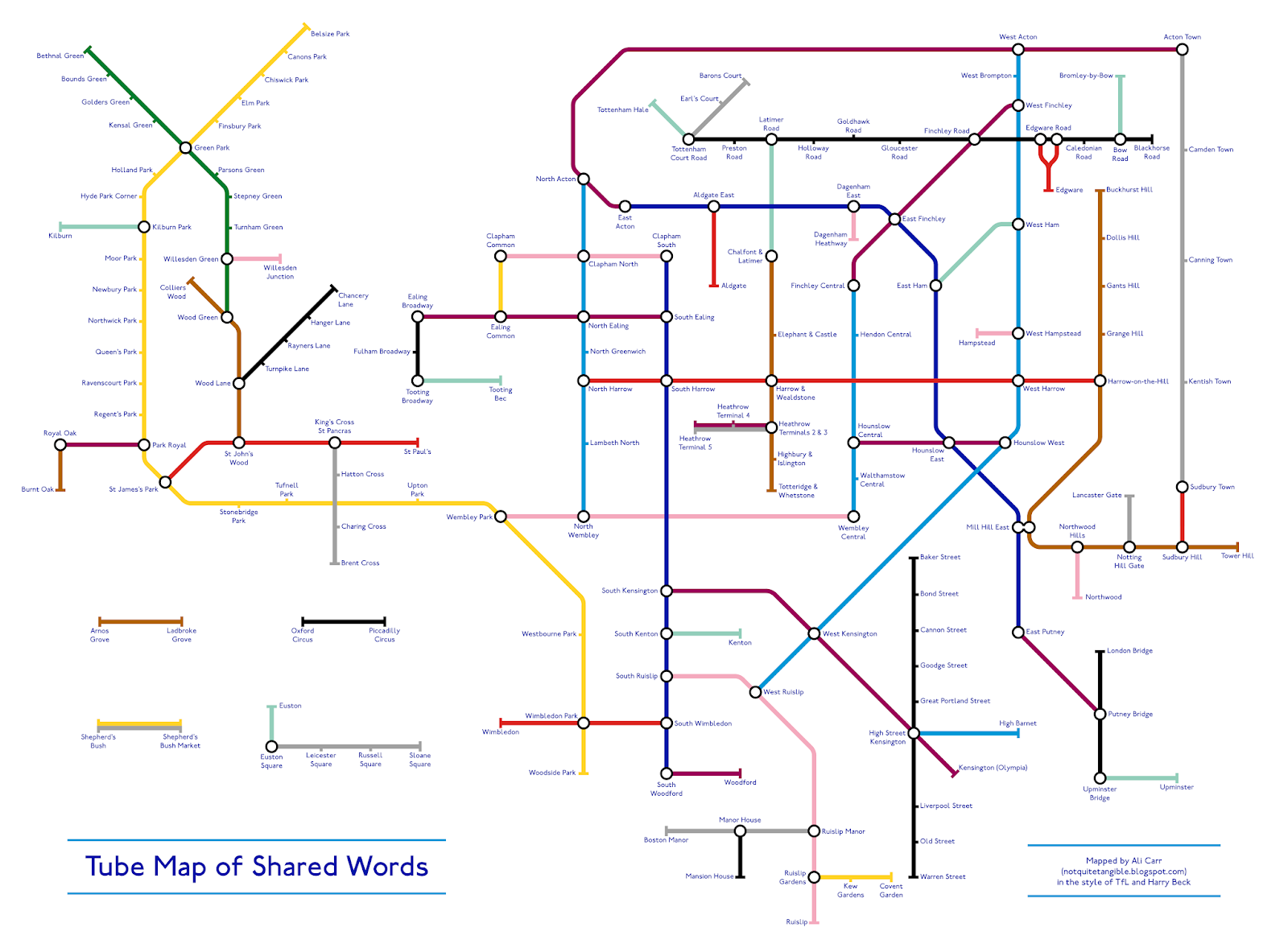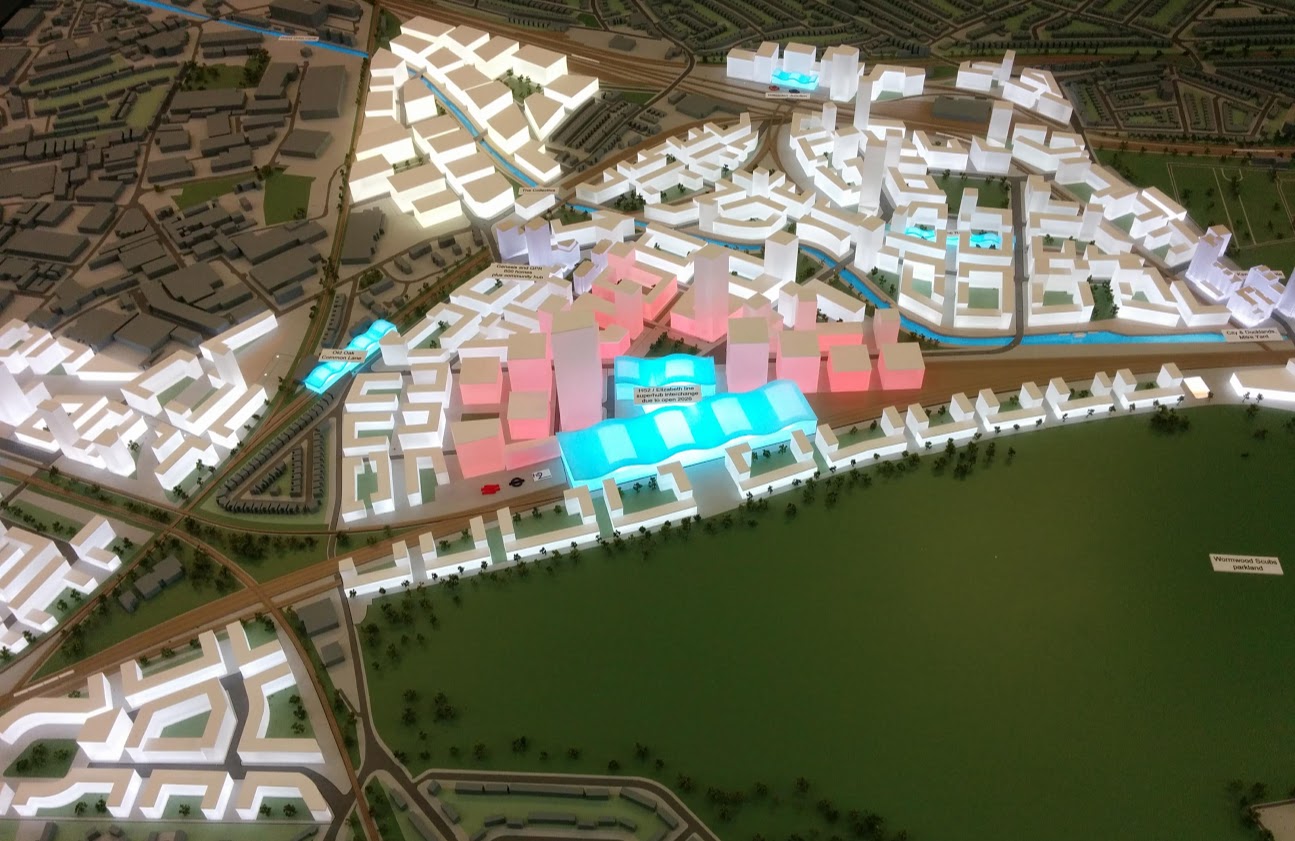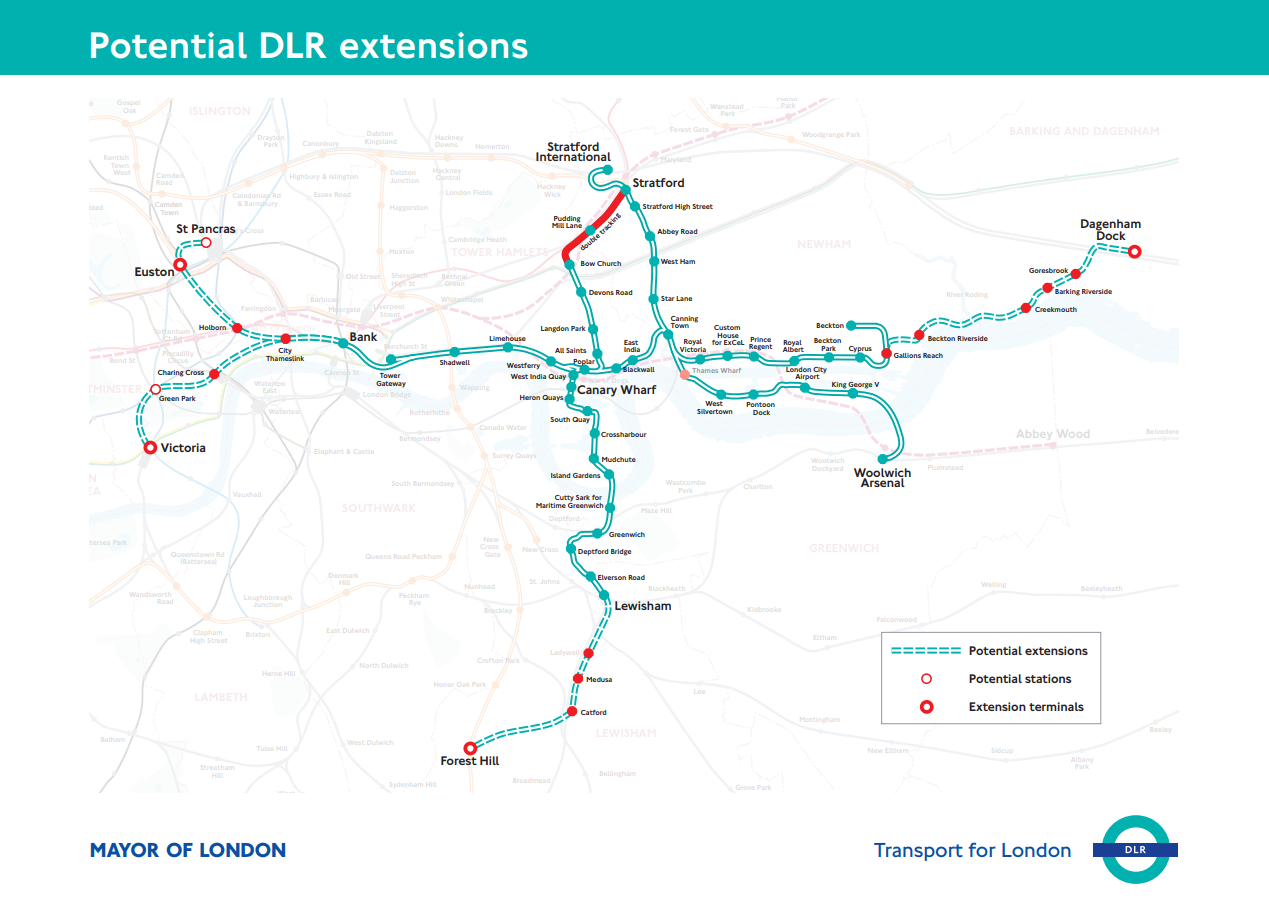Six months after its planned opening date, we still aren't sure exactly when Crossrail 1 will begin carrying passengers under central London. The fate of its sequel, Crossrail 2, hangs in the balance, although it has recently won some enthusiasm from the UK's probable next Prime Minister.
Crossrail 2 would be a new underground rail connection between the southwest and the northeast of London, following much of the same design philosophy as the east-west Crossrail 1. In 2015 a consultation was launched describing a proposed route, and in 2018 an Independent Affordability Review was established with the stated aim of guaranteeing the project's value for money.
 |
| Crossrail 2 route map, as of 2015 consultation |
Even though the Affordability Review was supposed to conclude in summer 2018, there's been no word yet regarding its findings. In the meantime, discussion of the project has continued on less official channels.
In May 2019, the TaxPayers' Alliance published a report suggesting ways in which the cost of the scheme could be brought down and proposing alternative schemes which (they argue) could provide better value for money. In this post, I'll map out some of their ideas.
In May 2019, the TaxPayers' Alliance published a report suggesting ways in which the cost of the scheme could be brought down and proposing alternative schemes which (they argue) could provide better value for money. In this post, I'll map out some of their ideas.
I should emphasise that, having no background whatsoever in transport planning or civil engineering, I'm not in a position to speak with any authority on the merits of these proposals. My motivation, first and foremost, is that producing colourful maps is fun. This post does offer an opportunity to explore the official Crossrail 2 plans in more detail, which I hope is useful regardless of how seriously the alternative suggestions should be taken.
Current Crossrail 2 proposals
Crossrail 2's core section consists of a new pair of rail tunnels between Wimbledon and New Southgate. In this section Crossrail 2 would serve many stations providing interchanges with other lines, including Tottenham Court Road and Euston St Pancras.
In the southwest, Crossrail 2 services would run on National Rail track and serve destinations in London's suburbs. In the northeast, there would be a branch from Dalston to Tottenham Hale and Broxbourne using existing track on the West Anglia Main Line.
 |
| 2040 Tube Map putting Crossrail 2 in context |
- Taking suburban services in South West London off the tracks into Waterloo (replacing them with Crossrail 2 services) frees up capacity for more longer-distance services to run to Waterloo
- Building extra tracks on the West Anglia Main Line north of Tottenham Hale allows more National Rail services to run to Liverpool Street and Stratford
- A station at Balham or Tooting Broadway helps relieve pressure on the Northern line, in particular by scooping up passengers who would otherwise have changed onto the Victoria line at Stockwell
- A station at Euston helps better disperse passengers arriving from HS2
- Improving transport access for outer London opens up new housing opportunities (which, as London Reconnections writes, is very often overlooked)
 |
| 1946 proposal which would gradually evolve into Crossrail 2 |
TPA's alternative
The TPA report suggests a number of revisions to the scheme. The stations providing few interchange opportunities (Chelsea) or requiring circuitous diversions (Balham) would be cut. The central section would follow a different route, avoiding Euston St Pancras in favour of destinations closer to the City of London, with three alternatives put forward. The northwestern branch would be dropped entirely, potentially replaced with a surface-level branch to Gordon Hill.
 |
| TPA proposal for Crossrail 2 |
Altering the route
As currently proposed Crossrail 2 would serve three central stations: Victoria, Tottenham Court Road and Euston St Pancras. The Crossrail 1 station at Tottenham Court Road has already been "future-proofed" in anticipation of a pair of north-south Crossrail platforms, which can be seen in this video from Geoff Marshall (at about 3:45).
The TPA report puts forward three alternative routes in this central section. One alternative keeps the Tottenham Court Road station but replaces Euston St Pancras with a new station at Clerkenwell (including new platforms on the Circle line, between King's Cross St Pancras and Farringdon). Another alternative would put a Crossrail 2 station between Chancery Lane and Farringdon. The third alternative serves City Thameslink as well as Crossrail 1's Moorgate / Liverpool Street complex.
There could be some headaches for tube mappers. The current tube map overstates the distance between Farringdon and Chancery Lane (by putting Farringdon much closer to King's Cross St Pancras). On a tube map where Crossrail 2 serves Farringdon / Chancery Lane, this distortion would have to be addressed.
 |
| Sketch of Crossrail 2 at Tottenham Court Road, from 2015 consultation |
There could be some headaches for tube mappers. The current tube map overstates the distance between Farringdon and Chancery Lane (by putting Farringdon much closer to King's Cross St Pancras). On a tube map where Crossrail 2 serves Farringdon / Chancery Lane, this distortion would have to be addressed.
 |
| Good luck squeezing in the station name labels! |
That said, there is still a long way between the station platforms at Chancery lane and at Farringdon (as Franklin Jarrier's excellent CartoMetro map indicates), meaning that a Crossrail 2 station there could involve some very lengthy interchanges.
Platform use at Wimbledon
Wimbledon is one of the most complex stations in Outer London, with four District line platforms, five National Rail platforms and two Tramlink platforms. At platforms 6 and 7, trains usually run through the station without stopping, and those two platforms are generally closed to passengers.
 |
| Current platform layout at Wimbledon |
Crossrail 2 would make the station even more complex. Under the 2015 consultation proposals, the existing Tramlink platforms would be relocated outside the station, and four new Crossrail 2 platforms would be built (at a lower level than the existing platforms). Platforms 10 and 13 would be used for "through" trains to and from South West London, while platforms 11 and 12 would be used for trains starting and finishing at Wimbledon (very similar to plans for Crossrail 1 at Old Oak Common).
 |
| Wimbledon after Crossrail 2 (2015 consultation proposal, with some further information from here) |
 |
| Wimbledon after Crossrail 2 (TPA proposal) |
Something completely different
The TPA report ends with suggestions for transport schemes which it argues could meet some of Crossrail 2's objectives at a lower cost. One of these is an extension of the DLR from its terminus at Bank to Euston and St Pancras.
 |
| DLR extension to Euston and St Pancras |
Three more of the suggestions are mapped below:
 |
| Inner South London metro |
 |
| Connection from Herne Hill to Fenchurch Street |
 |
| North and East London express metro |
Conclusions
A decision on next steps for Crossrail 2 is planned to form part of the 2019 Spending Review. Given that policymakers in the UK might have (*cough*) a lot on their plate in autumn 2019, it's possible that the decision could be delayed. The scheme's high price tag, the delays and cost overruns befalling Crossrail 1 and complaints of disproportionate infrastructure investment in London pile on pressure to delay Crossrail 2 or kill the project off entirely.
But as we've seen, the principles behind the Crossrail 2 proposals have been around for decades. The transport and housing issues which the project is intended to address will still need answers. For as long as that's the case, the idea of Crossrail 2 won't go away.
But as we've seen, the principles behind the Crossrail 2 proposals have been around for decades. The transport and housing issues which the project is intended to address will still need answers. For as long as that's the case, the idea of Crossrail 2 won't go away.













